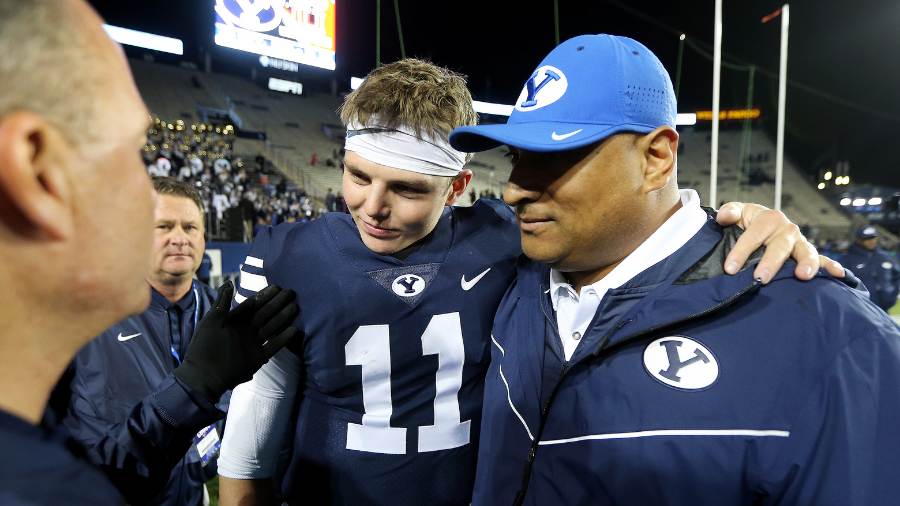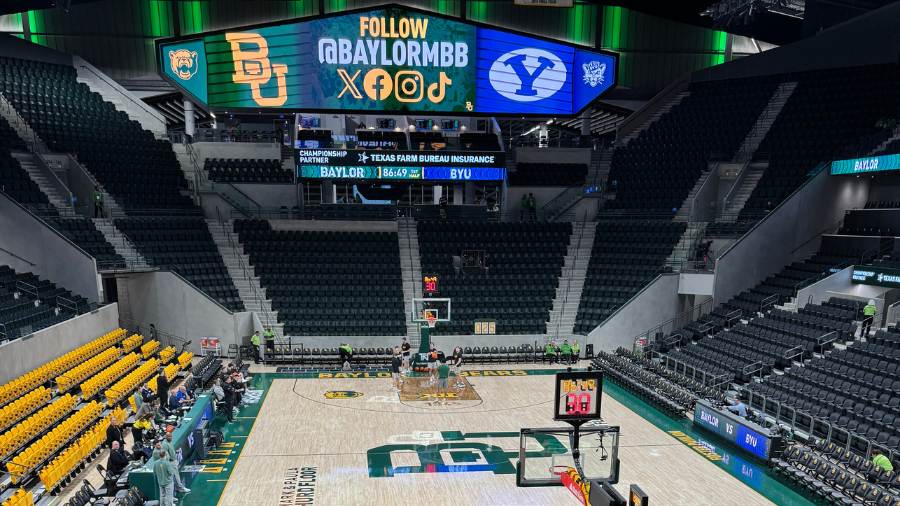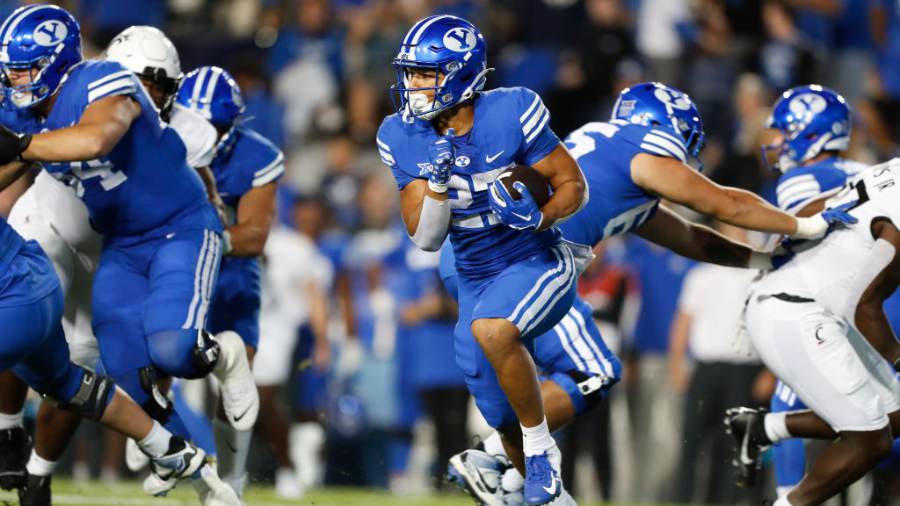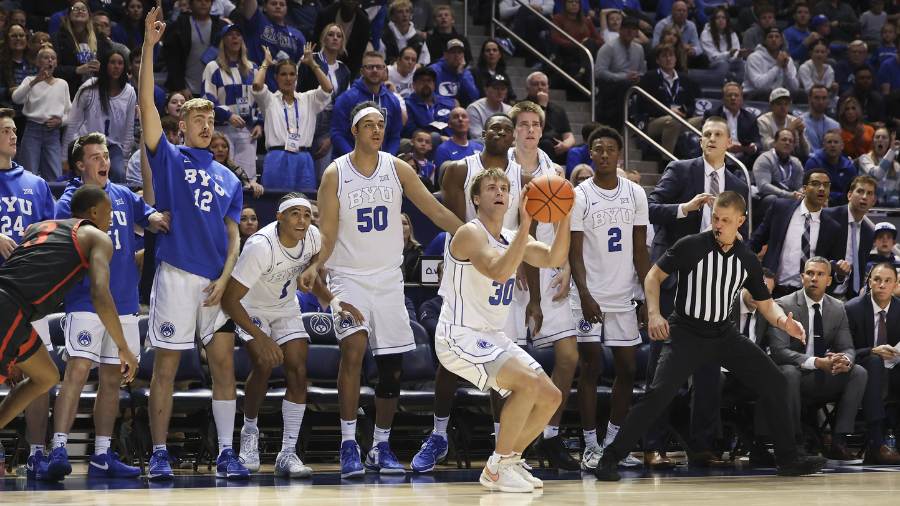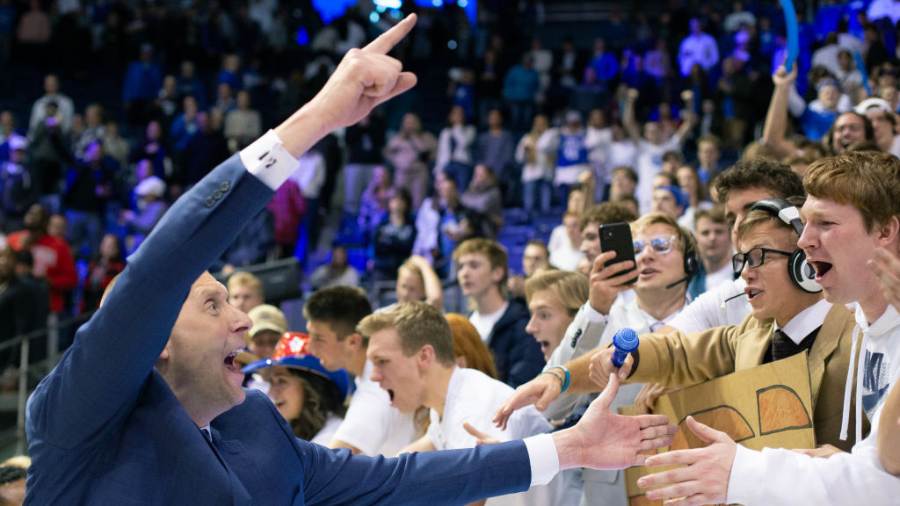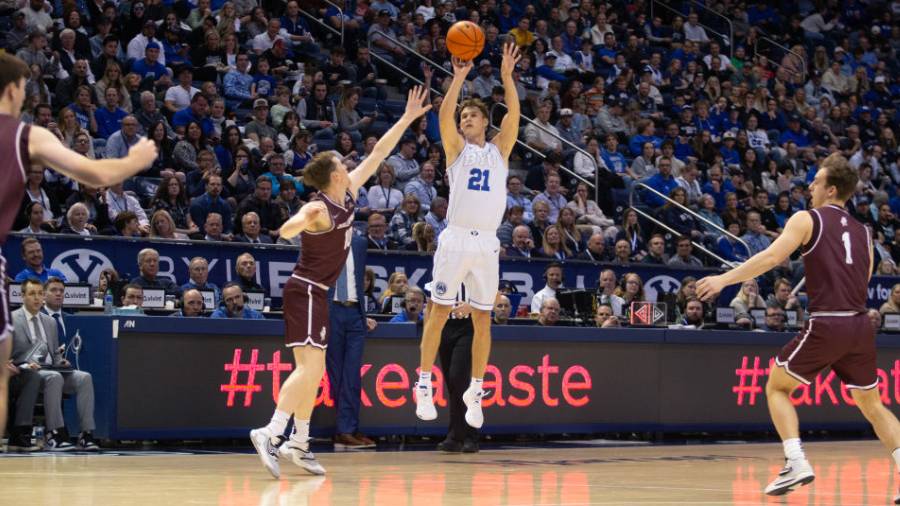What’s Next For New Big 12, BYU Amid Super Conference Moves?
Jun 30, 2022, 11:25 PM | Updated: 11:34 pm
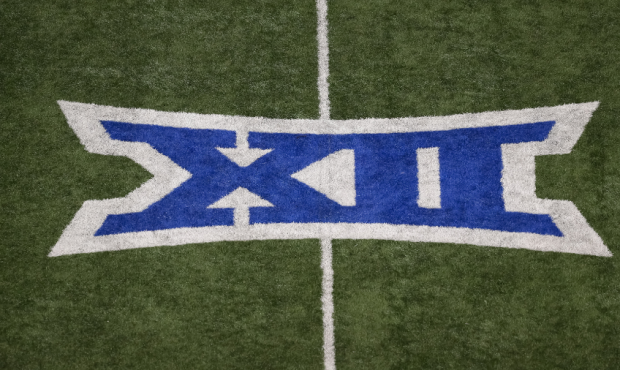
The Big 12 Conference exits the Spring Business Meetings with "a plan" for conference expansion. (Photo by Scott Winters/Icon Sportswire via Getty Images)
(Photo by Scott Winters/Icon Sportswire via Getty Images)
SALT LAKE CITY – Whenever you think conference realignment is over, there’s always another move waiting in the wings.
We saw that on Thursday, the college sports landscape took another step towards professional entertainment with USC and UCLA headed for the Big Ten.
Today was a MASSIVE day in sports! 🤯
What do you think is the biggest story? Reply and let us know! ⬇️@975Hans @BodkinKSLsports @Mitch_Harper @LloydColezone @mariluzcook pic.twitter.com/etJzIzUSvU
— KSL Sports (@kslsports) June 30, 2022
Say hello to the super conference era.
Instead of four 16-team leagues, we’re looking at two conferences running away from the rest in college athletics.
It’s a shocking move that has everyone in college athletics wondering, what’s next? If a blueblood powerhouse like USC, which has been with the PAC for more than 100 years, can leave, nothing is safe in college athletics.
Everyone needs to be on guard for the next move.
Big 12 knows conference realignment more than anyone
One conference, in particular, knows realignment more than most; that’s the Big 12 Conference. BYU’s new home on July 1, 2023.
Once Texas and Oklahoma dropped their bombshell last year to go to the SEC, the Big 12 cobbled up what they could and acted quickly to get BYU, and the best from the AAC in UCF, Cincinnati, and Houston. As a result, the new Big 12 has been optimistic about its potential, especially with a new commissioner hire, Brett Yormark, set to take over on August 1.
There is no blueblood in the new Big 12, but the financial projections for the league kept them within striking distance of the Pac-12 with USC and UCLA. Research firm Navigate had the Big 12 making $57.5 million per year in 2029 and the Pac-12 at $62.8 million. That Pac-12 was with USC and UCLA in the fold.
Without USC and UCLA, you have to think the Pac-12 revenue dips.
So, what happens next for BYU’s next home, the new Big 12? Let’s look at some options.
Big 12 aggressively pursues teams to become the third-best conference
Oregon and Washington will do everything they can to get into the Big Ten Conference. Who isn’t right now? Reportedly, “for now” the Big Ten isn’t adding any more members. So what’s next?
Who says no? 👀 pic.twitter.com/JbTSfyv3M6
— Barstool Big 12 (@BarstoolBig12) June 30, 2022
The Big 12 has never been on the attack in conference realignment talks; this is their chance. If the Big Ten doesn’t bring in the Ducks and Huskies or other Pac-12 teams, the Big 12 has to do everything possible to bring programs like the Huskies and Ducks into the fold.
Same with the Arizona schools, Colorado, and Utah. Television negotiation rights will begin for the Big 12 Conference in February 2024. This is the chance for the Big 12 to pounce potentially.
What gives the Big 12 a chance to be on the attack this time is that Texas and Oklahoma aren’t in the way to prevent any such moves.
Kick the tires on ACC members
ACC’s Grant of Rights is locked in until 2036, so it could be a non-starter, but for ACC members that want to get out of the shadows of Clemson in football and Tobacco Road in basketball, could there be something here?
Louisville once upon a time was viewed as a potential Big 12 candidate. They love their basketball program, would there be enough of a selling point to say, “come join the best basketball conference in America?” It might be out-of-the-box thinking, but everything needs to be on the table.
Make sure Big 12 members don’t leave for the Pac-12
As the Action Network’s Brett McMurphy reported, the Pac-12 feels there is a chance to add Big 12 schools. On the surface, it would seem unlikely, considering the revenue gap wasn’t substantial between the two leagues when USC and UCLA were on board with the Pac-12. Also, the Pac-12 scoffed at adding the leftover Big 12 schools last year after Texas and Oklahoma bailed.
But, don’t ever assume a school is entirely on board. To have members potentially leave for the B1G or SEC is one thing, but to have membership bolt for the PAC would be disastrous for the new Big 12.
On the flip side, wouldn’t one of the leftover eight Big 12 teams already have been poached at this point in the super conference battles?
Merger with the Pac-12?
What about a full-blown 22-team merger with the remaining Pac-12 members with Big 12 leadership continuing to guide the league. A 22-team conference would give the flexibility to withstand defections if the B1G and SEC poach more schools in the future.
.@19scottmitchell spits 🔥🔥🔥 about UCLA and USC leaving for the Big Ten.
He is not happy. pic.twitter.com/xZhxZ3wgcB
— KSL Sports (@kslsports) July 1, 2022
Last year, after the Big 12 added BYU, UCF, Cincinnati, and Houston, Commissioner Bob Bowlsby addressed a gathering of media at a Baylor football game and said there could be 20 to 24 members in the Big 12 in the future.
Maybe that future is here.
Fox Sports’ CEO has already gone on the record with positive impressions of the new Big 12 Commissioner Yormark, saying, “…we look forward to continuing to build on our relationship as a premier partner of the Big 12.” How much would Fox pay for a 22-team merger? If the dollars are right, who from the Pac-12 could say no?
A merger of the two leagues would position the 22-member conference as the only league with members in all four time zones and, in my opinion, would be the clear-cut third-best league.
As crazy as it sounds, it would also maintain some classic rivalries and bring back historical ones like BYU versus Utah as conference foes once again. Also, Arizona and Arizona State used to be WAC rivals with BYU in the 1960s and early 70s.
BYU AD Tom Holmoe told me at the Big 12 Spring Meetings that he wants to see college athletics think about the big picture rather than just their conference flag.
“We’ve got to be thinking a little bit more globally than locally. And that’s a hard thing to do for athletic directors. You want to focus your attention on what you’ve got at your own school. But you have to have a presence on that global network where we’re doing this for the good of the whole. Not only for what we have now but for the future of athletics and collegiate,” said Holmoe to KSL Sports on June 2, 2022.
The idea of bringing the two fractured leagues together sounded crazy a day ago, but now it doesn’t sound so wild. That’s just the reality of this new era of college athletics.
Mitch Harper is a BYU Insider for KSLsports.com and host of the Cougar Tracks Podcast (SUBSCRIBE) and Cougar Sports Saturday (Saturday from 12–3 p.m.) on KSL Newsradio. Follow him on Twitter: @Mitch_Harper.

